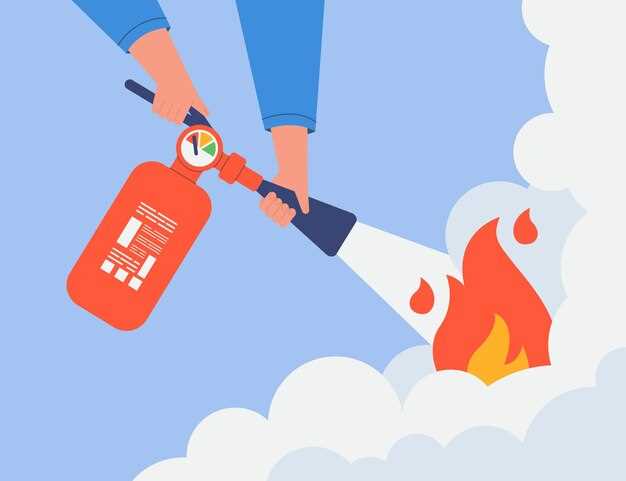
Understanding how to select the best fire extinguisher for your car is a crucial aspect of ensuring your safety on the road. While the chances of encountering a vehicle fire may seem low, the consequences can be devastating. A reliable fire extinguisher can be a vital asset in mitigating risks and enhancing overall safety.
When it comes to fire safety, having the right equipment readily available can mean the difference between a minor incident and a catastrophic event. Therefore, it is essential to track the specifications and features of various fire extinguishers to find one that meets your needs. Consider factors such as size, type, and extinguishing capabilities when selecting the right model for your vehicle.
In this article, we will explore the various types of fire extinguishers available, offer guidance on how to assess their effectiveness, and share tips on proper placement and maintenance. By following expert recommendations, you can equip your car with the best fire extinguisher, giving you peace of mind and an added layer of safety during your travels.
Understanding Different Types of Fire Extinguishers for Vehicles

When selecting a fire extinguisher for your car, it’s essential to understand the different types available and their specific uses. The most common classifications are based on the types of fires they are designed to combat. The three primary types suitable for vehicles include Class A, Class B, and Class C extinguishers.
Class A extinguishers are effective against ordinary combustibles such as wood, paper, and fabric. Although these materials are less likely to be involved in a vehicle fire, having a Class A extinguisher can be beneficial in case of a fire caused by burning debris or trash that may accumulate in your car.
Class B extinguishers are specifically designed for flammable liquids, such as gasoline and oil. Given that vehicles operate on gasoline, this type of extinguisher is crucial for combating fires resulting from fuel leaks or spills. It’s imperative to select a Class B extinguisher that can effectively handle potential liquid fires.
Class C extinguishers are suitable for fires involving electrical equipment. Since modern vehicles are equipped with numerous electronic components, a Class C extinguisher is essential for tackling any electrical fires that might occur in your car’s wiring or devices.
Another important consideration when choosing a fire extinguisher is the size and accessibility. A portable extinguisher should be easy to handle and store within your vehicle, allowing quick access in case of an emergency. Look for models that can be mounted securely in the car to ensure they remain in place while driving.
Some fire extinguishers are labeled as multi-class, meaning they can address multiple fire types. For example, a Class A, B, and C extinguisher will provide comprehensive coverage, making it an excellent choice for vehicle use. Always check whether the extinguisher meets the necessary safety codes and standards.
In summary, understanding the different types of fire extinguishers and their applications is crucial for effectively managing fire risks in your vehicle. Ensure you choose an extinguisher that is appropriate for the potential fire scenarios you may face on the road.
Key Features to Look for When Choosing a Car Fire Extinguisher
When selecting a fire extinguisher for your vehicle, it is crucial to prioritize several key features to ensure optimal safety. The effectiveness of an extinguisher in case of a fire can significantly influence outcomes.
Type of Extinguisher: Look for a multi-purpose extinguisher rated for Class A, B, and C fires. These ratings indicate its ability to handle common fire sources found in vehicles, such as combustibles, flammable liquids, and electrical fires.
Size and Weight: The extinguisher should be compact and lightweight enough to fit in your car without taking up excessive space. A typical size for automotive use is a 2.5 to 5-pound extinguisher, as it is manageable for most individuals during an emergency.
Ease of Use: Choose an extinguisher with a simple, clear operating mechanism. Look for models that feature straightforward instructions and easy-to-use handles, allowing you to deploy it quickly under pressure.
Visibility and Accessibility: It’s essential to have the extinguisher easily accessible in the car. Ensure it comes with a mounting bracket or strap to secure it in a visible location, so you can reach it promptly in an emergency.
Pressure Gauge: A built-in pressure gauge is a valuable feature, as it allows you to monitor the extinguisher’s readiness. A visible gauge will help you ensure that the extinguisher is adequately charged when needed.
Durability and Maintenance: Choose extinguishers made from robust materials that can withstand the conditions inside a vehicle. Additionally, think about the maintenance requirements. Some models need regular servicing, while others are designed for minimal upkeep.
Certification and Ratings: Ensure the extinguisher is certified by a recognized organization such as Underwriters Laboratories (UL). A high-quality rating indicates that the extinguisher has been rigorously tested for effectiveness and safety.
Considering these key features will help you select a car fire extinguisher that meets your safety needs and enhances your overall peace of mind on the road.
Proper Installation and Maintenance Tips for Car Fire Extinguishers

Proper installation of a fire extinguisher in your car is crucial for ensuring safety during unexpected situations. Ideally, the extinguisher should be mounted within easy reach of the driver; commonly recommended locations include under the front passenger seat or on the side of the center console. Make sure that it is secure and does not obstruct access to controls or seat adjustments. Using brackets or straps designed for vehicle use can help keep the extinguisher stable during driving, especially on bumpy roads or tracks.
Regular maintenance of your fire extinguisher is essential to ensure it functions effectively when needed. Check the pressure gauge monthly; it should indicate within the green zone. If the needle is in the red zone, the extinguisher must be recharged or replaced. Inspect the extinguisher for any signs of damage, such as dents, rust, or leaks. If you notice any of these issues, replace the unit immediately. Additionally, make sure the nozzle is not blocked and is free from debris.
It’s advisable to have your fire extinguisher serviced annually by a professional to ensure it meets safety standards. They can perform a thorough check and necessary servicing to maintain compliance with local regulations. Remember that a car fire extinguisher has a limited lifespan; typically, it should be replaced every five to twelve years, depending on the manufacturer’s recommendations. Keeping these tips in mind will not only ensure your safety while on the road but also enhance your preparedness for emergencies.






